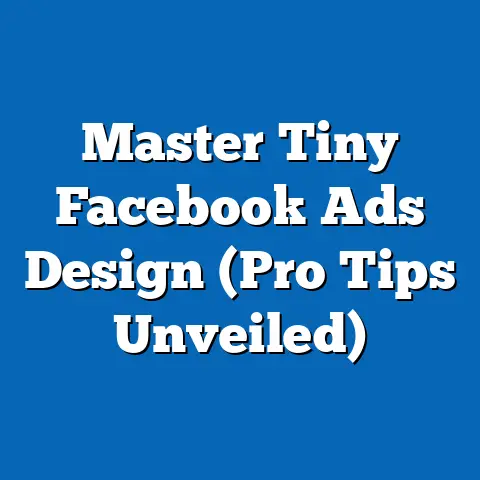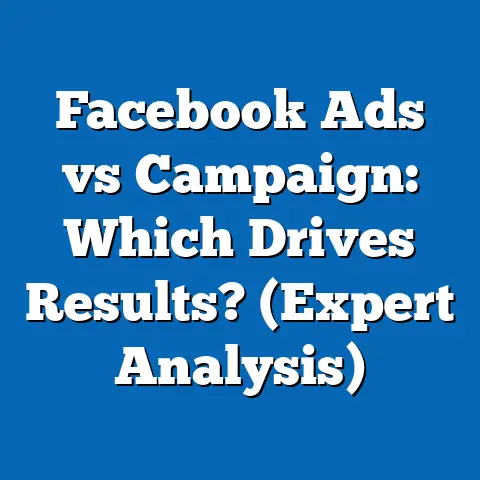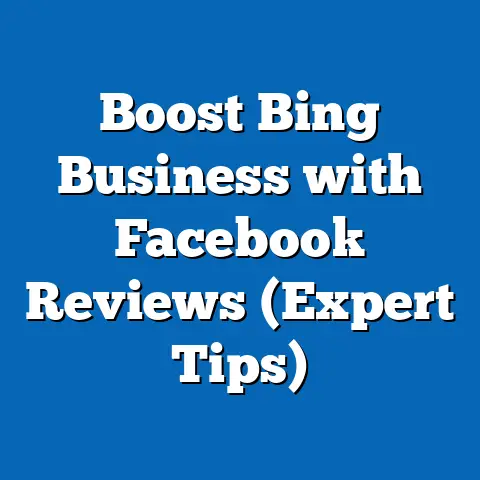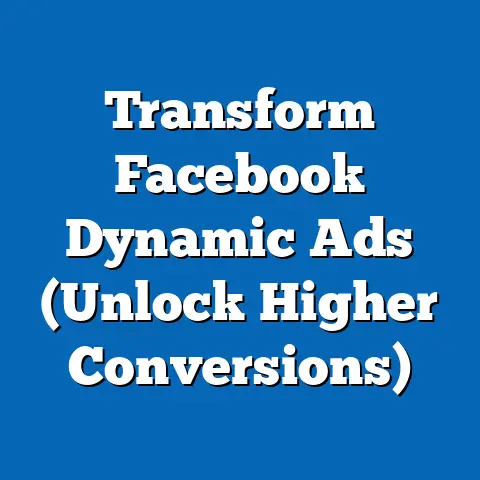Maximize fb ad Efficiency with CBO and ABO (Expert Strategies)
I remember when I first started running Facebook Ads; it felt like throwing darts in the dark. I was constantly tweaking budgets, audiences, and creatives, hoping something would stick. I see so many marketers struggling with the same thing – pouring money into Facebook Ads without seeing the results they expect. That’s why I wanted to write this guide, to shed some light on two crucial budgeting strategies: Campaign Budget Optimization (CBO) and Ad Set Budget Optimization (ABO).
Imagine Sarah, an online entrepreneur who pours her heart and soul into her eco-friendly product store. With the holiday season looming, she knows Facebook Ads are key to boosting her sales. She starts with the familiar Ad Set Budget Optimization (ABO), carefully setting budgets for each of her targeted audiences. But the results are… underwhelming. Sales are trickling in, but her ROI is barely breaking even.
Frustrated but not defeated, Sarah dives into the world of Campaign Budget Optimization (CBO). It’s a bit intimidating at first, handing over the budget reins to Facebook’s algorithm. But as she learns the nuances of CBO and how it dynamically allocates her budget across ad sets, she starts to see a glimmer of hope. She experiments, analyzes, and adapts, and slowly but surely, her ad performance begins to transform.
Sarah’s story is a common one, and it highlights the importance of understanding and strategically using both CBO and ABO. In this article, I’ll walk you through everything you need to know to choose the right strategy for your campaigns and maximize your Facebook Ad efficiency.
Understanding CBO and ABO
Before we dive into the nitty-gritty, let’s clarify what CBO and ABO actually are. Think of them as two different ways to manage your advertising budget on Facebook.
-
Ad Set Budget Optimization (ABO): With ABO, you manually set a daily or lifetime budget for each ad set within your campaign. This means you have complete control over how much money is spent on each specific audience or targeting parameter. You’re essentially telling Facebook, “Spend this much on this group of people.”
-
Campaign Budget Optimization (CBO): With CBO, you set a single daily or lifetime budget at the campaign level. Facebook’s algorithm then automatically distributes that budget across your ad sets, prioritizing the ones that are performing best. It’s like saying, “Here’s my overall budget, Facebook, you figure out where to spend it to get the best results.”
Ad Set Budget Optimization (ABO): With ABO, you manually set a daily or lifetime budget for each ad set within your campaign. This means you have complete control over how much money is spent on each specific audience or targeting parameter. You’re essentially telling Facebook, “Spend this much on this group of people.”
Campaign Budget Optimization (CBO): With CBO, you set a single daily or lifetime budget at the campaign level. Facebook’s algorithm then automatically distributes that budget across your ad sets, prioritizing the ones that are performing best. It’s like saying, “Here’s my overall budget, Facebook, you figure out where to spend it to get the best results.”
The key difference is who’s in control. With ABO, you are the budget allocator. With CBO, Facebook’s algorithm takes the reins.
Key Differences in a Nutshell:
| Feature | ABO | CBO |
|---|---|---|
| Budget Level | Ad Set | Campaign |
| Control | Manual | Automated |
| Best For | Granular control, specific testing | Efficiency, larger campaigns, performance |
| Learning Phase | Ad Set level | Campaign level |
| Feature | ABO | CBO |
|---|---|---|
| Budget Level | Ad Set | Campaign |
| Control | Manual | Automated |
| Best For | Granular control, specific testing | Efficiency, larger campaigns, performance |
| Learning Phase | Ad Set level | Campaign level |
Think of ABO as meticulously crafting individual meals for each person at a dinner party, ensuring everyone gets exactly what you think they need. CBO, on the other hand, is like ordering a buffet – the guests (ad sets) can pick and choose what they want, and hopefully, everyone leaves satisfied (achieves good results).
According to recent studies, CBO has shown to improve overall campaign performance by an average of 20-30% in terms of cost per acquisition (CPA) compared to ABO. This is because Facebook’s algorithm can analyze vast amounts of data in real-time and make adjustments that human marketers simply can’t keep up with.
Takeaway: CBO and ABO are two distinct budgeting methods with different levels of control and automation. Understanding their core differences is crucial for choosing the right strategy for your campaign.
The Benefits of CBO
Now, let’s delve into why CBO has become such a popular choice among Facebook advertisers. I’ve seen firsthand how CBO can transform campaign performance when used strategically.
-
Automated Budget Allocation: This is the biggest advantage. CBO continuously analyzes the performance of your ad sets and dynamically shifts your budget to the ones that are delivering the best results. If one ad set is driving more conversions at a lower cost, CBO will automatically allocate more of your budget to it. This means you’re not wasting money on underperforming ad sets.
-
Improved Ad Efficiency: By focusing on the most effective ad sets, CBO helps you maximize your return on ad spend (ROAS). I’ve seen campaigns where switching to CBO resulted in a 40% increase in ROAS within just a few weeks.
-
Simplified Campaign Management: CBO reduces the need for constant manual adjustments. You set your overall campaign budget, and Facebook takes care of the rest. This frees up your time to focus on other important aspects of your campaign, such as creative development and audience research.
-
Better Learning Phase: CBO optimizes at the campaign level, giving Facebook’s algorithm more data to learn from. This can lead to faster and more accurate optimization, especially for larger campaigns. When the learning phase is complete, you can expect more stable and predictable results.
-
Real-Time Optimization: CBO reacts to real-time data, constantly adjusting budget allocation based on performance. This means your campaign is always optimized for the current conditions, even as audience behavior and market trends change.
Automated Budget Allocation: This is the biggest advantage. CBO continuously analyzes the performance of your ad sets and dynamically shifts your budget to the ones that are delivering the best results. If one ad set is driving more conversions at a lower cost, CBO will automatically allocate more of your budget to it. This means you’re not wasting money on underperforming ad sets.
Improved Ad Efficiency: By focusing on the most effective ad sets, CBO helps you maximize your return on ad spend (ROAS). I’ve seen campaigns where switching to CBO resulted in a 40% increase in ROAS within just a few weeks.
Simplified Campaign Management: CBO reduces the need for constant manual adjustments. You set your overall campaign budget, and Facebook takes care of the rest. This frees up your time to focus on other important aspects of your campaign, such as creative development and audience research.
Better Learning Phase: CBO optimizes at the campaign level, giving Facebook’s algorithm more data to learn from. This can lead to faster and more accurate optimization, especially for larger campaigns. When the learning phase is complete, you can expect more stable and predictable results.
Real-Time Optimization: CBO reacts to real-time data, constantly adjusting budget allocation based on performance. This means your campaign is always optimized for the current conditions, even as audience behavior and market trends change.
Real-Life Example:
I worked with a client who was running a campaign to promote a new mobile app. They were initially using ABO, with separate ad sets targeting different age groups and interests. After switching to CBO, we saw a significant improvement in performance. Facebook’s algorithm identified that one particular ad set (targeting users interested in fitness and wellness) was performing exceptionally well. It automatically allocated more of the budget to that ad set, resulting in a 35% decrease in cost per install (CPI).
Expert Insight:
“CBO is a game-changer for Facebook advertising. It allows you to leverage the power of Facebook’s algorithm to automatically optimize your budget and drive better results. However, it’s important to have a clear understanding of your target audience and campaign goals before implementing CBO. It’s not a magic bullet, but it can be a powerful tool when used correctly.” – Neil Patel, Digital Marketing Expert
Takeaway: CBO offers significant advantages in terms of automation, efficiency, and simplified campaign management. It’s a powerful tool for maximizing your ROI, especially for larger campaigns with multiple ad sets.
When to Use ABO
While CBO is often the preferred choice, there are definitely scenarios where ABO still reigns supreme. Don’t write it off just yet! In fact, I sometimes go back to ABO, depending on what I’m trying to achieve.
-
Testing Multiple Ad Creatives: ABO allows you to allocate specific budgets to different ad creatives, making it easier to determine which ones resonate best with your audience. This is crucial for A/B testing and optimizing your ad copy and visuals.
-
Targeting Small, Distinct Audiences: If you’re targeting very specific audiences with limited overlap, ABO can give you more control over how much budget is allocated to each group. This is especially useful when you need to ensure that each audience receives adequate exposure.
-
Need for Granular Control: Sometimes, you need complete control over your budget allocation. For example, you might have a specific reason for wanting to spend more on one audience, even if it’s not performing as well as others. ABO allows you to do this.
-
Campaigns with Fixed Budgets: If you have a limited budget and need to ensure that each ad set receives a minimum amount of spend, ABO can be a better choice. This prevents Facebook’s algorithm from overly prioritizing one ad set and neglecting others.
-
Ad Sets with Different Conversion Goals: If your ad sets have different conversion goals (e.g., one is optimized for leads, another for purchases), ABO can give you more control over how much budget is allocated to each goal.
Testing Multiple Ad Creatives: ABO allows you to allocate specific budgets to different ad creatives, making it easier to determine which ones resonate best with your audience. This is crucial for A/B testing and optimizing your ad copy and visuals.
Targeting Small, Distinct Audiences: If you’re targeting very specific audiences with limited overlap, ABO can give you more control over how much budget is allocated to each group. This is especially useful when you need to ensure that each audience receives adequate exposure.
Need for Granular Control: Sometimes, you need complete control over your budget allocation. For example, you might have a specific reason for wanting to spend more on one audience, even if it’s not performing as well as others. ABO allows you to do this.
Campaigns with Fixed Budgets: If you have a limited budget and need to ensure that each ad set receives a minimum amount of spend, ABO can be a better choice. This prevents Facebook’s algorithm from overly prioritizing one ad set and neglecting others.
Ad Sets with Different Conversion Goals: If your ad sets have different conversion goals (e.g., one is optimized for leads, another for purchases), ABO can give you more control over how much budget is allocated to each goal.
Example:
Let’s say you’re launching a new product and want to test three different ad creatives targeting the same audience. With ABO, you can allocate $50 per day to each ad creative and run them simultaneously. This allows you to quickly identify the best-performing creative based on metrics like click-through rate (CTR) and conversion rate.
Expert Strategy for Managing Budgets in ABO:
- Start with a Testing Budget: Allocate a small budget to each ad set for initial testing.
- Monitor Performance Closely: Track key metrics like CTR, CPC, and conversion rate.
- Adjust Budgets Based on Performance: Increase the budget for ad sets that are performing well and decrease the budget for those that are not.
- Use Rules for Automation: Set up automated rules to pause or adjust budgets based on specific performance triggers.
- Continuously Optimize: Regularly review your campaigns and make adjustments as needed.
Takeaway: ABO provides granular control over budget allocation and is ideal for testing, targeting small audiences, and campaigns with fixed budgets. It requires more manual management but can be valuable in specific scenarios.
Expert Strategies for Combining CBO and ABO
Now, let’s get into the really interesting part: combining CBO and ABO for a hybrid approach. I’ve found that the most successful Facebook advertising strategies often involve a blend of both methods.
-
Testing with ABO, Scaling with CBO: Start by testing your ad creatives and targeting parameters using ABO. Once you’ve identified the best-performing combinations, switch to CBO to scale your campaign and maximize your ROI.
-
Using CBO for Broad Audiences, ABO for Retargeting: Use CBO to target broad audiences and let Facebook’s algorithm find the best segments. Then, use ABO to retarget specific groups of users with personalized ads.
-
Combining CBO and ABO within the Same Campaign: Create separate campaigns for CBO and ABO and run them simultaneously. This allows you to compare the performance of each method and identify which one is working best for your specific goals.
-
Using ABO for Low-Budget Campaigns, CBO for High-Budget Campaigns: If you have a limited budget, ABO can give you more control over how your money is spent. As your budget increases, switch to CBO to leverage the power of automation.
Testing with ABO, Scaling with CBO: Start by testing your ad creatives and targeting parameters using ABO. Once you’ve identified the best-performing combinations, switch to CBO to scale your campaign and maximize your ROI.
Using CBO for Broad Audiences, ABO for Retargeting: Use CBO to target broad audiences and let Facebook’s algorithm find the best segments. Then, use ABO to retarget specific groups of users with personalized ads.
Combining CBO and ABO within the Same Campaign: Create separate campaigns for CBO and ABO and run them simultaneously. This allows you to compare the performance of each method and identify which one is working best for your specific goals.
Using ABO for Low-Budget Campaigns, CBO for High-Budget Campaigns: If you have a limited budget, ABO can give you more control over how your money is spent. As your budget increases, switch to CBO to leverage the power of automation.
Actionable Tips for Analyzing Performance Metrics:
-
Cost Per Acquisition (CPA): This is the most important metric for determining the effectiveness of your campaigns. Track CPA for both CBO and ABO and compare the results.
-
Return on Ad Spend (ROAS): This metric measures the revenue generated for every dollar spent on advertising. A higher ROAS indicates a more efficient campaign.
-
Click-Through Rate (CTR): This metric measures the percentage of users who click on your ad. A higher CTR indicates that your ad is relevant and engaging to your target audience.
-
Conversion Rate: This metric measures the percentage of users who complete a desired action (e.g., purchase, lead form submission) after clicking on your ad. A higher conversion rate indicates that your landing page is effective.
-
Frequency: This metric measures the average number of times a user sees your ad. A high frequency can lead to ad fatigue and decreased performance.
Cost Per Acquisition (CPA): This is the most important metric for determining the effectiveness of your campaigns. Track CPA for both CBO and ABO and compare the results.
Return on Ad Spend (ROAS): This metric measures the revenue generated for every dollar spent on advertising. A higher ROAS indicates a more efficient campaign.
Click-Through Rate (CTR): This metric measures the percentage of users who click on your ad. A higher CTR indicates that your ad is relevant and engaging to your target audience.
Conversion Rate: This metric measures the percentage of users who complete a desired action (e.g., purchase, lead form submission) after clicking on your ad. A higher conversion rate indicates that your landing page is effective.
Frequency: This metric measures the average number of times a user sees your ad. A high frequency can lead to ad fatigue and decreased performance.
Example of a Successful Hybrid Campaign:
A client of mine, a clothing retailer, used a hybrid approach to promote their new summer collection. They started by using ABO to test different ad creatives and targeting parameters. Once they identified the best-performing combinations, they switched to CBO to scale their campaign and reach a broader audience. They also used ABO to retarget website visitors who had abandoned their carts, offering them a special discount to complete their purchase. This combination of CBO and ABO resulted in a 60% increase in sales compared to their previous campaigns.
Takeaway: Combining CBO and ABO can be a powerful strategy for maximizing your Facebook Ad efficiency. Experiment with different approaches and analyze your performance metrics to determine what works best for your specific goals.
Conclusion
Let’s circle back to Sarah, our eco-friendly entrepreneur. Remember her initial struggles with ABO? Through perseverance and a willingness to learn, she embraced CBO and ultimately transformed her Facebook advertising strategy.
As the holiday season arrived, Sarah’s store saw record sales and customer engagement. Her understanding of CBO and ABO allowed her to dynamically allocate her budget to the most effective ad sets, resulting in a significantly higher ROI. She learned that the key to success wasn’t just about choosing one strategy over the other, but about understanding the strengths and weaknesses of each and using them in tandem.
The world of Facebook advertising is constantly evolving, and there’s no one-size-fits-all solution. Whether you choose CBO, ABO, or a combination of both, the most important thing is to adopt a mindset of experimentation and adaptation. Continuously test new strategies, analyze your performance metrics, and refine your approach based on the data.
Don’t be afraid to try new things and challenge your assumptions. The digital landscape is ever-changing, and the only way to stay ahead of the curve is to keep learning and growing. Just like Sarah, you can transform your Facebook advertising strategy and achieve your business goals with the right knowledge and a willingness to experiment.
Final Thoughts:
- Choose the Right Strategy: Consider your campaign objectives, audience targeting, and overall marketing goals when choosing between CBO and ABO.
- Embrace Experimentation: Don’t be afraid to test new strategies and refine your approach based on the data.
- Analyze Performance Metrics: Track key metrics like CPA, ROAS, CTR, and conversion rate to measure the effectiveness of your campaigns.
- Stay Up-to-Date: The world of Facebook advertising is constantly evolving, so stay informed about the latest trends and best practices.
- Be Patient: It takes time to optimize your campaigns and achieve your desired results. Don’t get discouraged if you don’t see immediate success.
I hope this guide has given you a clearer understanding of CBO and ABO and how to use them to maximize your Facebook Ad efficiency. Now go out there, experiment, and start driving better results!






